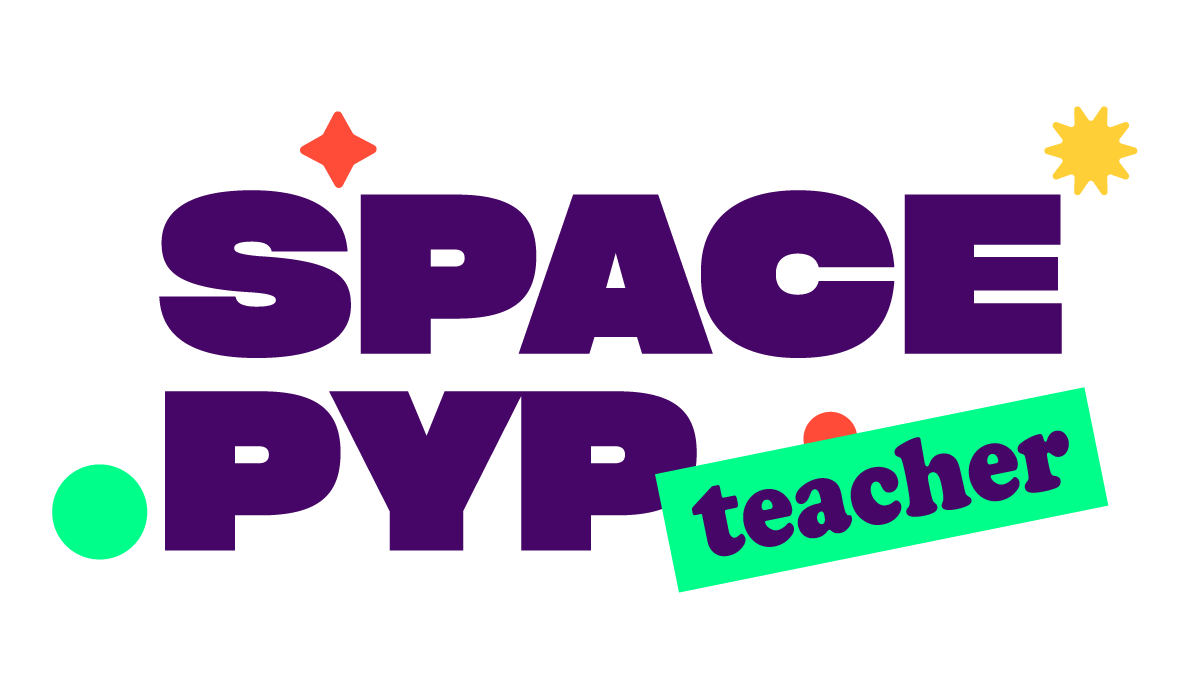This is the final post about the PYPX. Here, I’ll focus on Week 7; when students present their projects to the school community, and Week 8, dedicated to reflection.
Week 7 – PYPX
By Week 7, projects should be 90% complete and any actions that are not happening during the PYPX day must be finalized. The exhibition usually takes place at the end of the week, leaving the beginning for final preparations.
Leading up to the exhibition, students focus on practicing their oral presentations, structuring their information, and preparing bullet points to help guide their speech. To support them, we co-create a presentation checklist with all required elements, both for their oral presentation and for their displays (posters, photos, and evidence).
Presentation Checklist:
- Project title and team name
- Project and SDG logos
- Central idea and lines of inquiry
- Research questions
- Glossary
- Bibliography
- Math connection (including statistics like mean, mode, and median or graphs)
- English connection (evidence from Language Arts work)
- Activities and documentation for each LOI (ATL, key concepts, learner profile attributes)
- Connections to Art, Music, PE, and Additional Languages
- PYPX notebooks
- Photos of the work-in-progress
- Action evidence or results
(Each of these components is connected and explained in earlier posts in this blog series)
This checklist helps students guide their presentations and demonstrate their learning process—focusing on agency and metacognition.
Before the big day, students give a practice presentation in class to their peers, mentors, and Grade 6 students. It’s a great opportunity to get feedback and encouragement from older students who’ve been through the process before.
At the end of Week 7, we dedicate time to setting up the exhibition. Given the volume of materials, I usually allow two final periods and half a day the next day for setup. This also gives students time to enjoy the process. During setup, I meet with each group and record a short interview about how they’re feeling. I also film a time-lapse of the exhibition setup.
On the PYPX day, I first meet with parents to explain the process and how students have worked over the past weeks. Before families visit the projects, we show them a fun video that comically summarizes the 6-7 week journey.
Here are some photos from the 2023/2024 PYPX at ILG School, Prishtina. It was a very meaningful exhibition for me—students and I genuinely enjoyed the process, and the result was a high-quality PYPX thanks to a brilliant class, outstanding teachers acting as mentors, and a leadership team deeply committed to IB culture.
Clean energy can be a solution to combat extinction
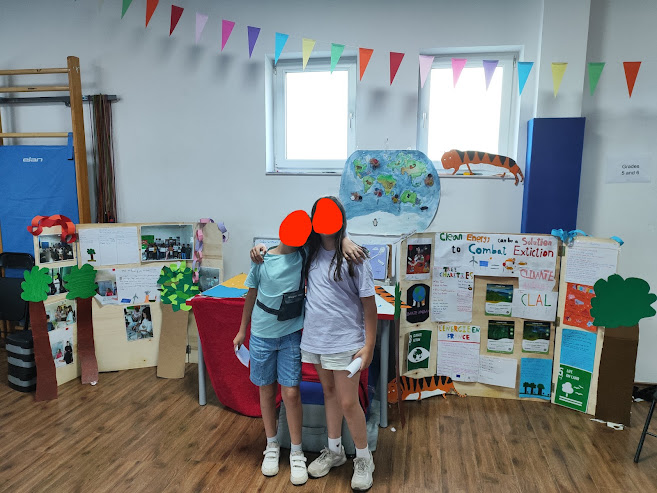
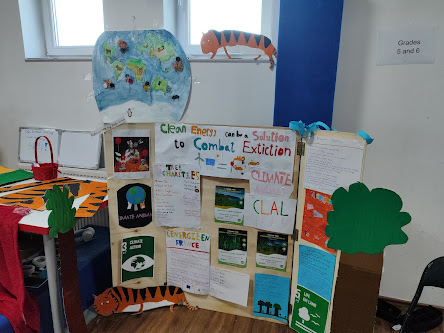
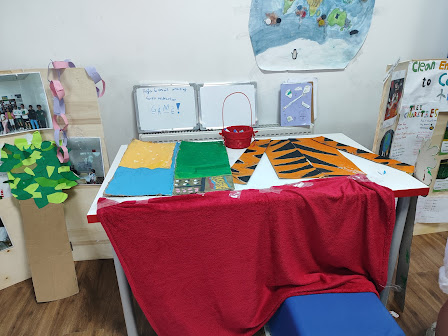
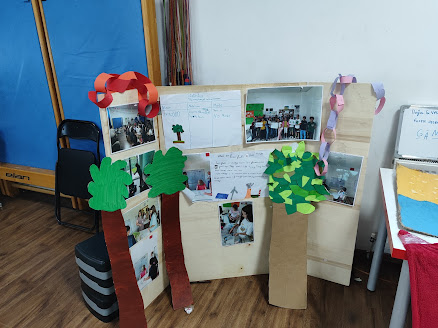
Fashion Engineering is a way to design a cleaner environment

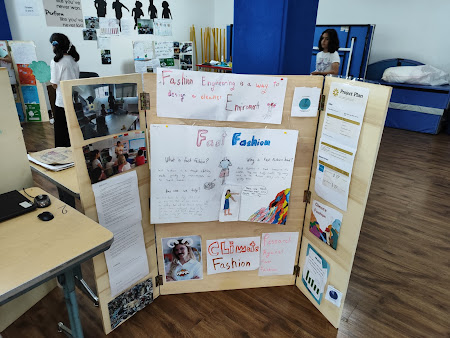
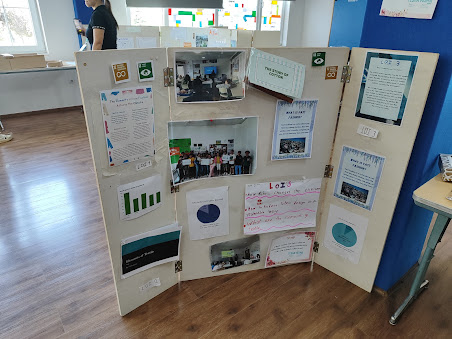
War impacts well-being
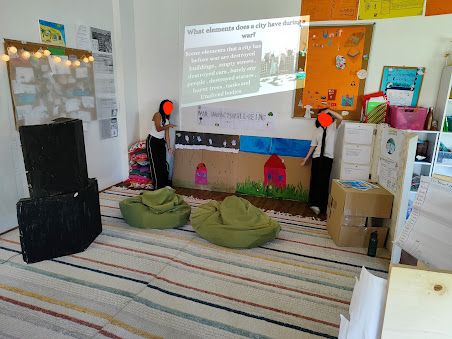
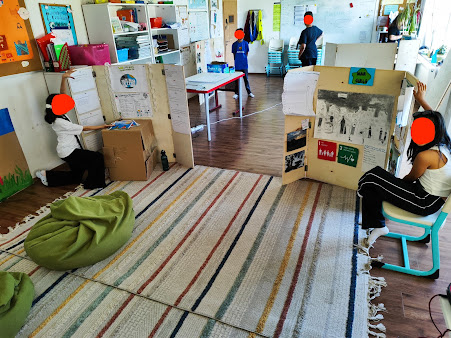
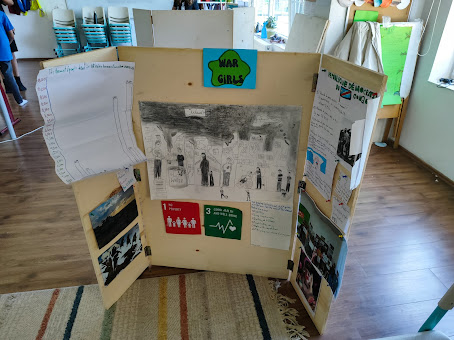
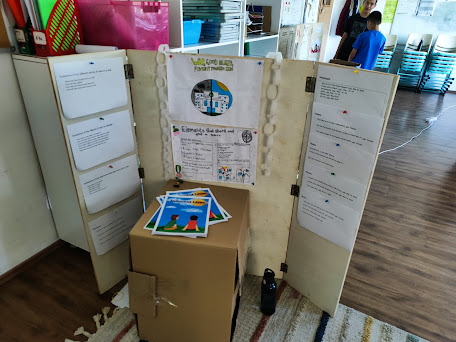
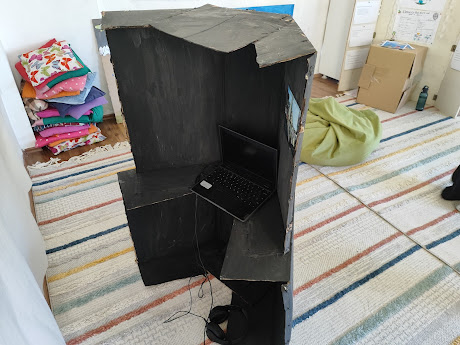
Week 8 – Reflection
Student reflection is one of the pillars of my teaching philosophy. Across every unit, and especially throughout the PYPX process, I’ve seen how meaningful reflection turns experiences into lasting learning. It’s not just about looking back—it’s about understanding growth, recognizing challenges, and setting new goals. When students reflect on their actions, their decisions, and even their mistakes, they develop ownership, self-awareness, and the ability to transfer their learning beyond the classroom. That’s why I always dedicate time and space to help them pause, process, and make sense of their journey.
We begin the final week with:
Tidy Up: Inspired by my visit to the International School of Belgrade (2022/2023), students receive two bags—one for trash, another for recyclable materials—and clear their setups within an hour. Guidelines help avoid conflicts over what can be taken home or reused in art/design classes.
PYPX Photos: Students receive printed pictures of themselves and their projects to paste into their PYPX notebooks as a keepsake.
Letters to Grade 4: Students write letters with personal reflections and advice for next year’s fifth graders.
PYPX Survey: Visitors complete a survey via QR code during PYPX day. In Week 8, we review the feedback together and discuss it critically as a growth opportunity—for both the students and me.
My PYPX Road Trip: A creative drawing exercise where students illustrate their journey through ups and downs, emotions, and lessons learned.

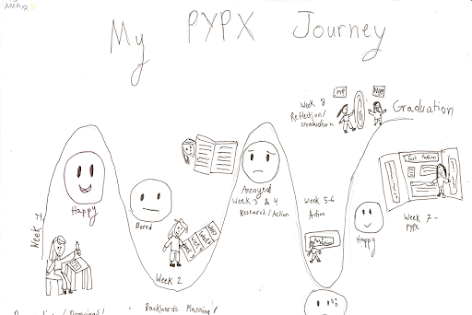
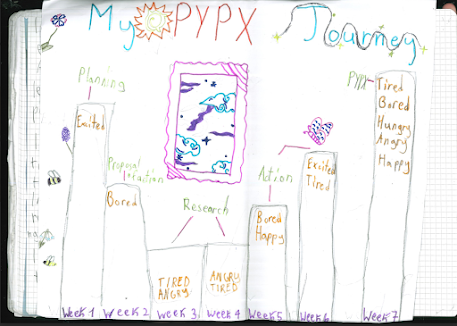
Self-Evaluation: Using a rubric, students reflect on their growth in ATL skills, learner profile attributes, and action development. They also evaluate their collaboration with mentors.
Letters to 2030 (or the year they graduate high school): Students write letters to their future selves, capturing their dreams and goals. We place them in a sealed box and bury it in a secret spot on the school grounds. At ILG, there are three buried time capsules… I hope they remain hidden.
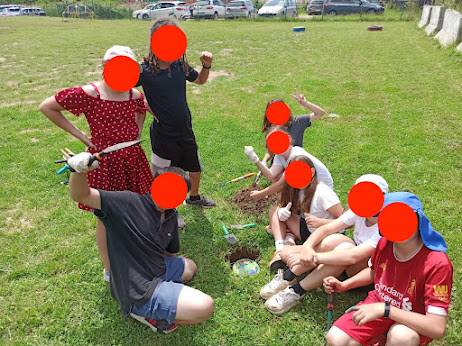
This concludes my 6-post series describing the 8-week PYPX process I developed during my time at ILG School. Over the years, I’ve refined this into a productive and authentically IB exhibition model.
In a future post, I’ll share how to involve Grades 3 and 4 in the PYPX culture. After all, it’s called the Primary Years Programme Exhibition, not the Grade 5 Exhibition. This journey should begin early and be built year by year.
These six posts are also my way of thanking the ILG School community. I miss you all—and especially the 2023/2024 PYPX generation. We grew, we learned, and we had a lot of fun. You’ve set the bar high. See you soon.
